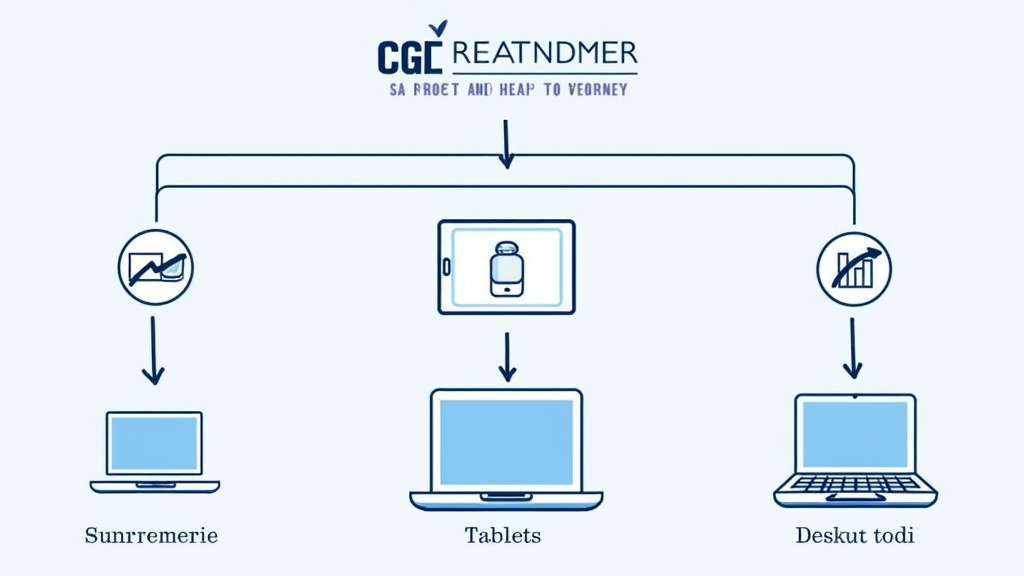Understanding Cross-Device Marketing Attribution: A Comprehensive Guide
Introduction
In today’s digital world, consumers use multiple devices to interact with brands. This makes it essential for marketers to understand how their marketing efforts perform across these devices. Cross-device marketing attribution helps you track user interactions from smartphones, tablets, and desktops, giving you a clearer picture of your audience’s journey. By mastering this concept, you can optimize your campaigns and improve your return on investment (ROI). In this guide, we will explore the importance of cross-device attribution and provide insights into overcoming its challenges.
The Challenges of Cross-Device Marketing Attribution
Identifying Users Across Multiple Devices
One major challenge in cross-device marketing attribution is identifying users as they switch between devices. For example, a consumer may first see an ad on their smartphone but later make a purchase on their laptop. Without proper tracking methods, it becomes difficult to connect these actions to the same user. Marketers often rely on cookies or device IDs for identification; however, these methods can be limited due to privacy regulations and changing technology.
Data Privacy and Compliance Issues
Data privacy is another significant hurdle in cross-device attribution. With laws like GDPR in Europe and CCPA in California, marketers must ensure they comply with strict regulations regarding user data collection and usage. These laws require transparency about how data is collected and used while also allowing users to opt out of tracking altogether. Balancing effective marketing strategies with compliance can be tricky but is crucial for maintaining consumer trust.
Techniques for Effective Cross-Device Attribution
User Identification Methods
To effectively attribute marketing efforts across devices, various user identification methods are employed. One common approach is using login information; when users log into an account on different devices, their actions can be tracked more accurately. Another method involves probabilistic matching techniques that analyze patterns in user behavior across devices without relying solely on cookies or identifiers.
Multi-Touch Attribution Models
Multi-touch attribution models allow marketers to assign value to each touchpoint along the customer journey rather than crediting only the last interaction before conversion. This approach provides a more comprehensive view of how different channels contribute to conversions over time. Popular models include linear attribution (equal credit across all touchpoints) and time decay (more credit given to recent interactions).
Tools and Technologies for Cross-Device Attribution
Overview of Popular Attribution Tools
Several tools are available that specialize in cross-device marketing attribution. Google Analytics offers features that help track user journeys across multiple platforms while providing valuable insights into campaign performance. Other popular tools include Adobe Analytics and HubSpot, which offer robust reporting capabilities tailored for multi-channel campaigns.
Integrating Analytics Platforms for Better Insights
Integrating various analytics platforms enhances your ability to gather insights from different sources effectively. By combining data from social media ads, email campaigns, website traffic analysis, and CRM systems into one cohesive view, you can better understand how customers engage with your brand across all devices.
Best Practices for Implementing Cross-Device Attribution Strategies
Setting Clear Goals and KPIs
Before diving into cross-device attribution strategies, it’s vital to set clear goals and key performance indicators (KPIs). Determine what success looks like—whether it’s increasing conversions or improving customer engagement—and establish measurable metrics accordingly. This clarity will guide your strategy development process.
Continuous Testing and Optimization
Cross-device marketing requires ongoing testing and optimization based on real-time data analysis results. Regularly review campaign performance against established KPIs so you can identify areas needing improvement or adjustment quickly—this ensures you’re always refining your approach based on actual performance rather than assumptions.
Case Studies: Successful Cross-Device Marketing Attribution Examples
Industry-Specific Success Stories
Many brands have successfully implemented cross-device marketing attribution strategies that yielded impressive results. For instance, a retail company used multi-touch attribution models combined with advanced analytics tools resulting in a 30% increase in sales by understanding customer behavior better across channels.
Lessons Learned from Leading Brands
Leading brands emphasize the importance of integrating analytics tools seamlessly while prioritizing data privacy compliance during implementation processes—these lessons highlight both technical execution aspects as well as ethical considerations necessary within modern-day digital advertising landscapes.
Future Trends in Cross-Device Marketing Attribution
The Role of Artificial Intelligence and Machine Learning
Artificial intelligence (AI) plays an increasingly critical role in enhancing cross-device marketing attribution accuracy through predictive modeling techniques capable of analyzing vast amounts of consumer behavior data efficiently—this allows businesses not only improved targeting capabilities but also personalized experiences tailored specifically towards individual preferences over time!
Evolving Consumer Behavior and Its Impact on Attribution
As technology evolves rapidly alongside shifting consumer behaviors influenced by factors such as mobile-first trends or increased reliance upon voice search functionalities—the landscape surrounding effective attributions continues adapting accordingly! Staying ahead means embracing innovation while remaining flexible enough pivot whenever necessary!
Conclusion
In summary, understanding cross-device marketing attribution is essential for optimizing your campaigns effectively today! By addressing challenges like identifying users accurately while adhering closely regulatory requirements—you’ll position yourself favorably within competitive markets! Remember always test continuously refine approaches based upon real-world feedback gathered through integrated analytics platforms ensuring maximum impact achieved throughout every stage customer journey!
📢 Explore More: Continue Your Journey!
If this article helped you understand cross-device marketing better check out “The Importance of Data Privacy in Digital Marketing”! It covers essential insights helping you navigate compliance issues effectively.














![NEEWER 55W 18"/45cm Ring Light Kit [New Version], 5600K Dimmable ...](https://m.media-amazon.com/images/I/414QLqvZWLL._AC_.jpg)








